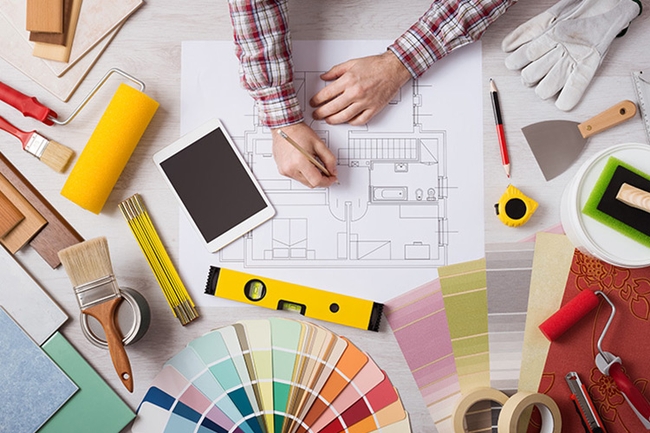Whether you have an eye for color, a keen sense of detail, or are simply interested in interior design, you can pursue a career in the industry. How To become an interior designer, you will need to study a design school and acquire the necessary skills and knowledge. In addition, you must keep up to date with the latest trends and industry knowledge. In addition, you should have a strong understanding of the seven elements of interior design.
Steps to becoming an interior designer
There are many things you need to consider to become a successful interior designer. First, you need to be licensed. You can get this certification through a National Council for Interior Design Qualification (NCIDQ) exam. Although it is not required in all areas, it will give you official recognition of your skills. Once you have your certification, you can work for established firms or start your own small business.
To become an interior designer, you should earn a bachelor’s degree or an associate’s degree in design, have two years of work experience, and pass the National Council for Interior Design Qualification (NCIDQ) exam. You should also be licensed in the state where you plan to practice. Some states require you to get a license before advertising your services or performing design work, so you should check the laws of your state first.
Second, you need to have artistic abilities and a keen sense of style. You may also need to take courses in computer-aided design (CAD) to become a better interior designer. Finally, you will need to research the state’s regulations regarding interior design.
Education requirements
If you’re interested in interior design as a career, there are several education requirements you need to meet. Whether you’re starting out or already have some experience in this field, an interior design school can give you the tools and training you need to succeed. A designer needs to be creative, have a keen eye for detail, and be current on industry trends. They must also understand the seven elements of interior design.
To become an interior designer, you must have an associate’s degree or higher, two years of experience in the field, and pass the National Council for Interior Design Qualification (NCIDQ) examination. The NCIDQ examination tests you on your knowledge of building codes, inspection regulations, design applications, and professional practice.
The Council for Interior Design Accreditation, also known as CIDA, is a recognized professional accrediting agency. Some programs may have been CIDA-accredited at the pre-professional assistant level, but these programs must be equivalent to the associate’s degree curriculum. To qualify, your program must offer at least 30 semester hours of coursework in the five content areas. You can also earn education credit for postsecondary-level courses in the content areas listed in the baccalaureate curriculum, but these must be taken through an approved program.
Experience required
To become an interior designer, you need to have experience in the industry. The traditional way to become an interior designer is through an educational program, but you can also learn on the job. An associate’s degree is a good start. After graduating, you can apply for internships and apply for job postings.
Interior design requires a wide range of skills, from understanding building codes to human behavior. You’ll need to be part artist, part project manager, and part psychologist. The goal is to create beautiful, functional spaces that satisfy client requirements. You’ll also need to know the laws and regulations of your state and local area. Some states require that you have a license or certification to practice interior design. These licenses can make you more marketable, and they will give clients the peace of mind knowing that you’re a professional.
To become an interior designer, you’ll need to complete an associate’s degree or a professional certification. Many universities offer online courses that teach the trade tools. It’s a good idea to look into the types of design jobs in your area of interest and take the time to become certified.
Career outlook
According to the U.S. Bureau of Labor Statistics, employment of interior designers will grow by about 4% over the next decade. The greatest increase is expected in new construction, which will continue to demand the skills of interior designers. Employment growth is expected to be steady through 2030. In general, the job market for interior designers will grow faster in high-income areas, where businesses can afford to hire interior designers.
If you want to be an interior designer, you must have a wide-ranging understanding of the different aspects of the industry and be hands-on with the software used for design. Earning a formal degree is a great way to learn more about the technicalities of the profession and improve your skills. Creating a portfolio is an essential part of this process and should include sketches and before-and-after photos of work sites, as well as fabric samples.
The demand for interior designers is expected to grow much faster than average for all occupations. The public’s interest in home improvement and awareness of its benefits will increase the number of people seeking these services. Additionally, the growth of home equity will lead to greater demand for residential design services. Many homeowners are using the equity in their homes to build additions, remodel aging kitchens, and create year-round outdoor living areas.
